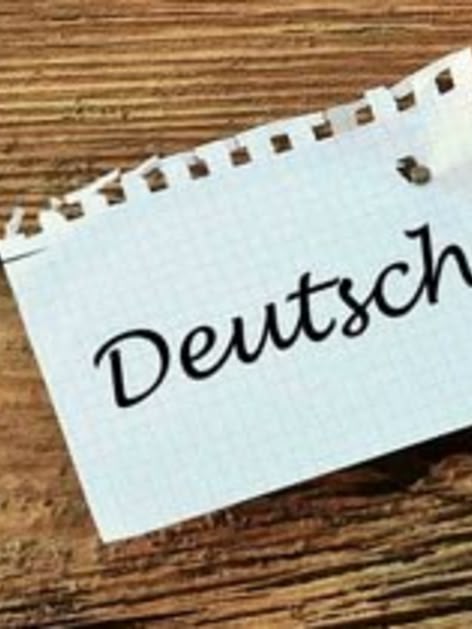Tips for Using the Correct German Articles (der, die, das)
Everything You Need to Know About German Articles
An article is a word that modifies or defines a noun and also tells whether the noun refers to a specific or general object. There are three different categories of articles: genus, numerus, and casus. The gender can be feminine, masculine, or neuter. The numerus describes whether the noun appears only once (singular) or several times (plural). Finally, there are four cases in German that define the noun's relationship to other parts of the sentence: nominative, accusative, dative, and genitive.
Like most languages, German has two types of articles: definite and indefinite. These are usually placed before a noun. The differences between these two types of articles are as follows:
Definite article: The definite article is used with a noun. As the name suggests, definite articles describe a specific object. The definite articles used in German are DER (masculine), DIE (feminine), and DAS (neuter).
Example: The dog is running. - Der Hund rennt.
The dog is a specific dog, not just a general dog.
Indefinite article: Indefinite articles are used when a thing, object, or person cannot be precisely determined or is unknown. The indefinite articles used in German are EIN (masculine and neuter) and EINE (feminine).
Example: A dog is running - Ein Hund rennt.
We don't know who this dog belongs to, we just know that it is a dog and that it is running.
Knowing when to use the definite article can be confusing, even for native English speakers. To avoid making mistakes or using the wrong article, you should review the following rule.
How to Find the Correct Definite Article in German
The best way to know which definite article to use is to look at the end of the noun. The chart below shows which endings require which definite article:
As with every rule, there are some irregularities and exceptions to this one. Therefore, you should only view the rule as a very good guide to finding the correct German definite article reliably.
Another helpful tip is to use the article "Die" when you're unsure which definite article is correct. This is because almost 45% of German nouns are feminine, so your chances of guessing correctly are high. The neuter article "Das," on the other hand, occurs least frequently, so you should only use it if you're certain "Das" is correct.
How to Identify the Gender of German Nouns
While many German speakers will tell you that the gender of each noun must be memorized individually, there are some helpful patterns that can guide you. Although exceptions exist, you can often make an educated guess about a noun's gender by looking at its ending. Here's a general guide:
Masculine nouns (der):
Nouns ending in -or, -ling, -ig, -ner, or -ismus are typically masculine. Examples include:
- der Generator
- der Frühling
- der Honig
- der Rentner
- der Kapitalismus
Feminine nouns (die):
Nouns ending in -ung, -ie, -ei, -keit, -heit, -schaft, -tät, -ik, or -tion are generally feminine. Examples include:
- die Zeitung
- die Komödie
- die Bäckerei
- die Tätigkeit
- die Schönheit
- die Mannschaft
- die Universität
- die Musik
- die Situation
Neuter nouns (das):
Nouns ending in -chen, -lein, -ment, -tum, -ma, or -um are usually neuter. Examples include:
- das Mädchen
- das Fräulein
- das Supplement
- das Rittertum
- das Schema
- das Museum
By paying attention to these endings and pairing them with the correct definite article, you'll start seeing patterns in German nouns. Over time, this approach will help you make confident guesses about the gender of almost any noun you encounter.
Gender Rules for People, Animals, and Occupations in German
In German, nouns which refer to male living beings, whether humans or animals, are generally masculine and take the article "der." Examples include:
- Male people: der Mann (man), der Vater (father), der König (king)
- Male animals: der Hengst (stallion), der Hahn (rooster)
Conversely, nouns referring to female living beings are usually feminine and take "die." Examples include:
- Female people: die Frau (woman), die Mutter (mother), die Königin (queen)
- Female animals: die Stute (mare), die Henne (hen)
However, there are some exceptions to this rule. Notably, diminutives like das Mädchen (girl) and das Fräulein (Miss) are neuter, even though they refer to females. This is because nouns ending in -chen or -lein are almost always neuter in German. Keep in mind: it is the word itself that has a gender, not the object it represents.
The same principle applies to occupations. This isn't about assigning jobs based on gender but about grammatical gender in the language. For example:
- der Polizist (male police officer)
- die Polizistin (female police officer)
Upon successful understanding of these patterns, you can confidently match articles to nouns when talking about people, animals, or professions in German.
Additional Tips for Determining German Noun Gender
Beyond the basic rules, there are several other patterns that can help you identify whether a noun is masculine, feminine, or neuter, and which article to use.
Masculine nouns (der) - these typically include:
- Days, months, and seasons - for example, der Montag (Monday), der Januar (January), der Sommer (summer)
- Directions - like der Norden (north)
- Car or train brands - for instance, der Mercedes
Feminine nouns (die) - common examples are:
- Cardinal numbers - such as die Eins (one)
- Names of ships, aircraft, or motorcycles - like die Titanic
Neuter nouns (das) - these often include:
- Colours used as nouns - for example, das Rot (red)
- Most terms related to science, technology, and mechanics
While there are always exceptions, keeping these patterns in mind makes it easier to predict the gender of nouns. By forming these mental patterns, learning and remembering German articles becomes much more intuitive.
Conclusion
Despite all the challenges that come with learning German, there are always some shortcuts that can make your life much easier. It's important to learn the rules for using the correct definite article to train your sense of the German language. This way, you'll gradually find yourself thinking less about which article is the correct one.
Once you understand how der, die, and das correspond to noun gender, the next step is learning how to use plural nouns. The good news is that plurals are generally simpler: in most cases, the article die is used for plural forms. The main exceptions occur in the dative and genitive cases, but overall, forming and using plurals in German is much more straightforward than mastering singular gender.
Would you like to test your German level and your newly acquired grammar knowledge? Then our German language test is exactly what you need!







